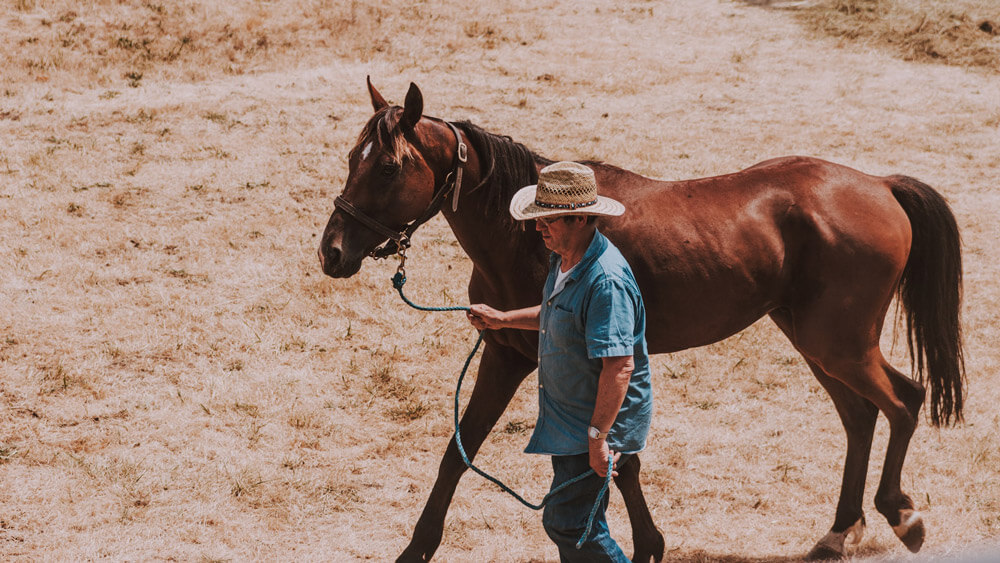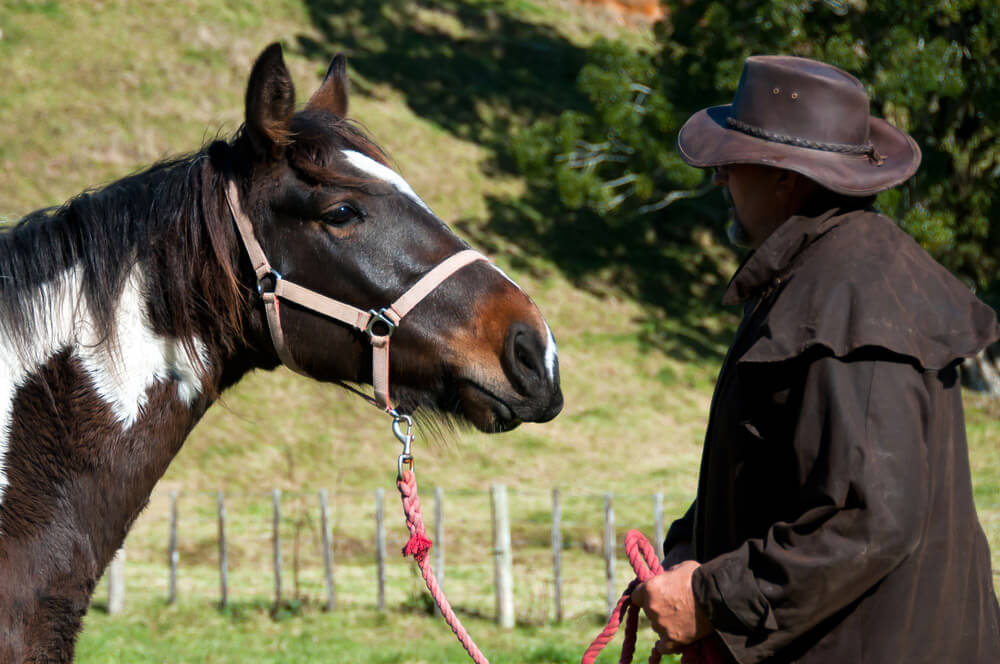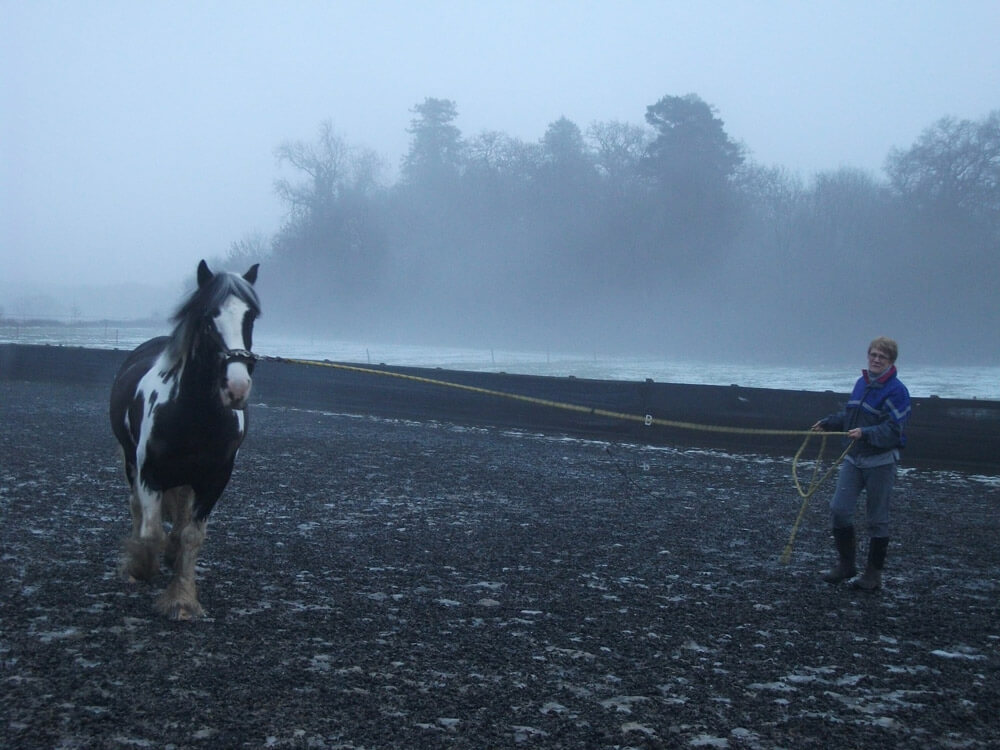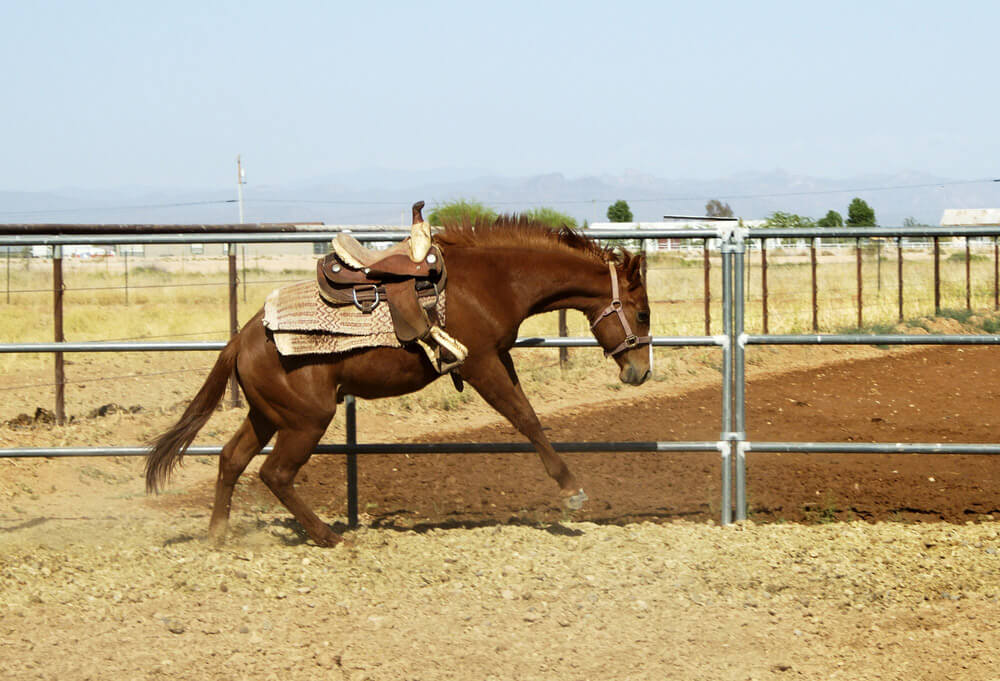It takes 4 to 6 weeks to break in a horse but the precise time depends on several factors. Well-behaved and friendly horses are obviously easier to handle. While rough companions may need extra time to get used to the training.
Let’s dip in the nitty-gritty of breaking in a horse to get how to do it properly.
What Does It Mean to Break a Horse?
A broken horse means that this animal is safe and ready to be ridden or driven. So breaking a horse means applying a set of training that aims to prepare the horse to be controlled by an equestrian. Breaking in a horse is important in terms of rider safety. As you want to mount and dismount a calm and rider-friendly horse with no probs.
Another similar term is “saddle breaking”, which implies to make a horse feel comfy with a horse saddle on its back. The companion has to get used to tacking a saddle, a bridle, and reins, so the rider can handle the horse duly. That’s why the horse learns how to respond on a variety of commands to steer, stop, and others.

Useful Glossary
Here’s a list of common terms that are used in terms of breaking a horse.
- Breaking (Breaking in) – the process of teaching a horse to be ridden.
- Breaking to harness – the process of teaching a horse to be driven (to pull a harness).
- Backing – the start of training a horse. The process may begin at any age.
- Unbroken (Unbacked) – a horse that has never been taught to be ridden. Or a horse that’s not going to be taught at all due to health conditions.
- Riding away – rough training for faster breaking in.
- Green (Dumb) – a low-experienced horse. A horse that has just started training or the one who needs a lot of stuff to learn.
- Broke to death – a highly-experienced horse. Such a horse is well-trained and safe for a rider.
- Restarting – the process of starting a horse once again after leaving it for some time with no training. A horse owner can have a break with breaking a horse until it’s mature and then restart the training.

When to Start Training a Horse?
Breaking in a horse starts as soon as possible, preferably at foal age. A horse owner introduces their foal with new objects and commands, so the horse can be ready to be ridden when it grows up.
Young horses are aware of the basic grooming routine, including combing and hoof picking. They learn how to gently respond to the owner and get on well. Foals are easier to teach, unlike grown-up horses. You may find it difficult to train a horse older than 4 months of age.

What Age Should You Break in a Horse?
Horses are usually broken at the age of 2 to 6 years old. It depends on the horse breed, its temperament, and the purpose you follow. In fact, some horse breeds mature only at the age of 6, which is natural for them. In this case, the owner may wait until maturity or start breaking at 3-4 years old.
Therefore, you should ask a professional about your specific horse breed and find out what the best age for breaking in is. Don’t expect too much from youngsters who are just at an early stage of training. Keep in mind that breaking a horse immensely affects the overall horse’s physical and mental health. Thus, think wisely over the intensity of breaking in.

How to Break a Horse Properly
Breaking in a horse is a complicated process that includes a range of techniques and commands. Start with easy steps to introduce your horse with basic operations. The following methods are used to break in a horse is a smooth way.
Wearing a Halter
This means is great for young horses. However, it requires constant training, perfectly, on a daily basis.
You can start by brushing and stroking your horse. Be gentle and calm, treat your horse with yummies from time to time. Introduce your companion with a halt at first. Let him know it’s safe and not dangerous. You may need some time to put on a halter, as a horse can refuse to wear the rope on the neck at first.
Leading a Horse
When you’re done with the halter and your horse feels comfy with it, it’s time for the next step. If you have a well-trained horse at hand, it’s a great plus. You can lead another horse to show the unbroken one that it’s fine.
You need to attach the lead ropes to the halters. While doing it, treat your horse to keep it relaxed. Then step back a bit holding the end of the rope. Hold out your arm with a treat. The horse should come to you and eat it. If it doesn’t move, come closer to the horse. Don’t treat the companion until he comes to you.

Breaking with a Bridle and Bit
Before you introduce your horse with a bit, get the teeth checked by a dentist. If everything is ok, break in a horse with a new snaffle bit. It should be done at the place where the horse feels cozy. Place the bit gently in his mouth, practice on using it every day. Increase the time spent with the bit gradually. Walk the horse for a while and watch him not getting rid of the mouthpiece.
Soon after you can remove the halter and attach horse reins to the bit. The strategy is the same – keep it little by little and walk around to get used.
Saddle Breaking
As we already mentioned, you should also teach your horse to be ridden with a saddle on. Make sure the companion is well-trained and can lead flawlessly. You can start by brushing your horse and treating him. While doing this, lean on his back gently, so he feels a bit of pressure.
The next step is to put some lightweight things on the horse’s back like a piece of clothing. If you have a trained horse, do this trick on it first and then go on to the breaking the rookie one. Repeat the actions until you see the horse is ok with it.
Before applying the saddle, you can introduce a saddle pad first. It’s light and soft, so there should be no probs with gearing up. Calm your horse with petting and brushing, give a treat if needed. Continue leaning on the horse for a while, so the horse can get used to your weight.
Next, try to tack up a saddle on the horseback. Let the companion smell the new apparel and then lift it above his back. When the horse is ready, start tightening the saddle. This may take some time, so the horse will let you accomplish it. And again, pet and treat. Show the process on another horse in front of the companion.
Ready to Go
If you nail all these steps, well done! Now the horse is ready to be ridden. You have set a trustful relationship and your companion is getting more obedient. Treat your little friend nicely, be patient and you’ll end up with great riding outcomes.

Final Thoughts
Breaking in a horse is a step-by-step process that needs some time to be obtained. But once you slay it, you’ll get a top-notch companion to take part in equestrian activities. This guide reveals the basics of how to break a horse that you might find helpful.
Apart from training, you should take care of your horse’s nutrition. Thus, check out our article on what horses like to eat.
